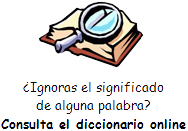| Some Teachers Want Students to Learn
with AI
 Many
educators fear students will use the artificial intelligence (AI) tool
ChatGPT to write their reports or cheat on homework. But other teachers
are including it in the classroom. Many
educators fear students will use the artificial intelligence (AI) tool
ChatGPT to write their reports or cheat on homework. But other teachers
are including it in the classroom.
Donnie Piercey is a teacher in Lexington, Kentucky. He told his 23
5th-grade students to try and outsmart the tool that was creating
writing assignments. Piercey says his job is to prepare students for a
world where knowledge of AI will be required.
He describes ChatGPT as just the newest technology in his 17 years of
teaching that caused concern about the possibility of cheating. They
include tools to help with math and spelling as well as Google,
Wikipedia and YouTube.
“As educators, we haven’t figured out the best way to use artificial
intelligence yet,” he added. “But it’s coming, whether we want it to or
not.”
One lesson in his class was a writing game between students and the
machine. Piercey asked students to “Find the Bot.” Each student wrote a
short report about boxer Muhammad Ali. Then they tried to figure out
which was written by ChatGPT.
Teaching a lower grade level, Piercey is less worried about cheating
than high school teachers. His school system has blocked students from
ChatGPT but permits teachers to use it.
Many educators around the country say schools need
time to figure out the chatbot. But they also say a ban will be useless
against students that are good at technology and can work around it.
ChatGPT quickly became popular after its November launch. Other
companies like Google have since released their versions of AI-powered
chatbots.
At the Future of Education Technology Conference in New Orleans,
Louisiana, last month, Texas math teacher Heather Brantley gave a talk
on the Magic of Writing with AI for all Subjects.
“I’m using ChatGPT to enhance all my lessons,” she told The Associated
Press. The tool is blocked for students but opens to teachers at her
school. She said she asked the chatbot to create real-world examples for
her math class.
For a lesson about slope, or direction of a line in algebra, the chatbot
suggested students build ramps out of cardboard. The students could then
measure the slope. For teaching about surface area, the chatbot said
students would see how the idea works in real life when wrapping gifts
or building a cardboard box, said Brantley.
Students in Piercey’s class said working with a chatbot makes learning
fun.
After playing “Find the Bot,” Piercey asked his class what skills it
helped them learn. “How to properly summarize and correctly capitalize
words and use commas,” said one student. Another student felt that
sentences written by students “have a little more feeling… More flavor”
Students Olivia Laksi and Katherine McCormick, both 10, said they can
see the good and bad parts of working with chatbots. They can help
students who have trouble putting their thoughts into writing. And there
is no limit to the creativity it can add to classwork.
McCormick said students can use it for suggestions, but should not use
it to do all the work.
“You shouldn’t take advantage of it,” McCormick said. “You’re not
learning anything if you type in what you want, and then it gives you
the answer.” |
![]() ).
Utiliza el botón derecho del ratón y "guardar enlace" para descargar
el fichero a tu PC, tablet, Smartphone, etc.
).
Utiliza el botón derecho del ratón y "guardar enlace" para descargar
el fichero a tu PC, tablet, Smartphone, etc.![]() Escucha el audio
Escucha el audio



